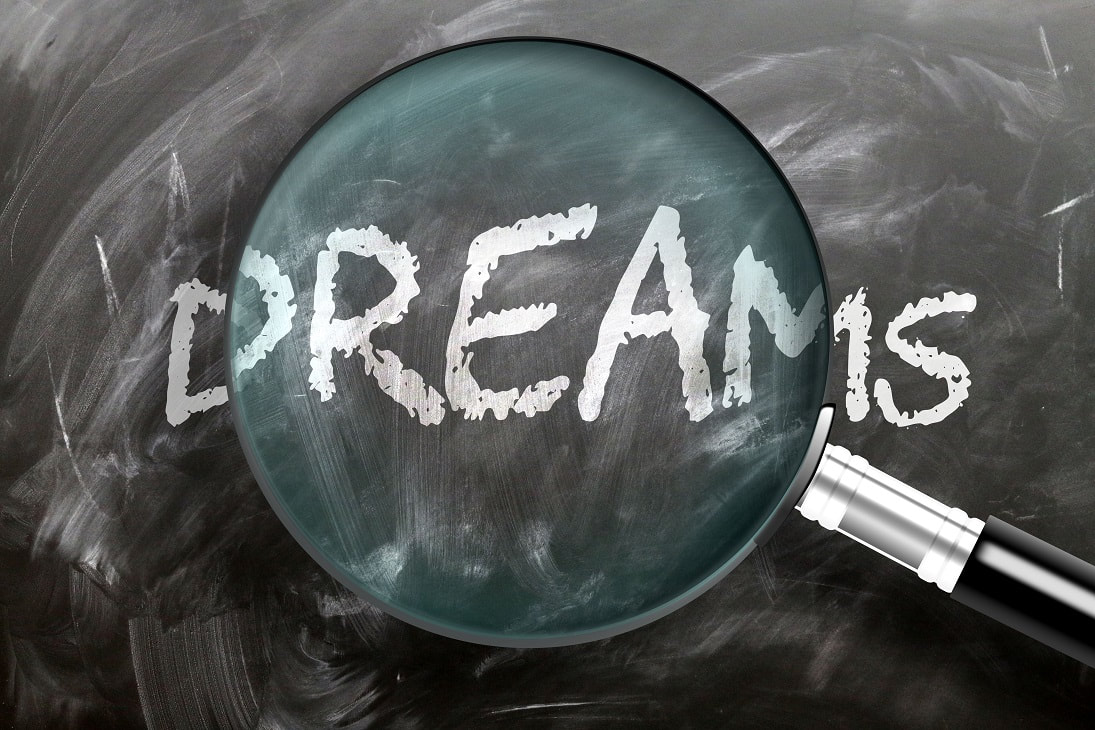|
The mystery of dreams has fascinated man since the beginning of time. The ancient Zuni civilization believed that while we are dreaming spirits are visiting our souls. The oracles of ancient Mesopotamia believed in the prophetic power of interpreting dreams and the aboriginal people of Australia believe that dreams represent spirits that once inhabited the Earth. While for some people dreams are nothing more than random thoughts that occur while we are sleeping, mankind by and large throughout history has tried to make sense of this universal experience that occurs every night. Why Do We Dream? While we are sleeping our brain shifts its patterns of neuronal firing in what has been identified as the four stages of sleep that correspond to how deeply we descend into a state of unconsciousness over a frequency of roughly five cycles each night. While research has shown that we may be dreaming during any of these stages, the vivid quality of dreams as story-like episodes occurs specifically to one of the stages, Stage I, also known as “REM sleep.” REM, as most of us know today, stands for “rapid eye movement,” a discovery made by sleep researchers, Aserinsky and Kleitman, in 1953. While it is not yet certain why we dream, scientists, such as Hobson and McCarley, speculate that it is during this period that memories and the associations they generate are recalled during this period for the purpose of sorting through and reorganizing experience, sort of like running your computer through a disc cleanup exercise to improve its efficiency. The purpose of sleep isn’t just a restoration of energy and alertness (see my blog on Why We Sleep, Why We Don’t, and How to Sleep Better), but also, according to what they call the activation-synthesis hypothesis, to think more efficiently and to be able to better organize our thoughts as a function of dreaming. Dreaming is so important, in fact, that if we don’t get enough of it while we are sleeping not only are our thoughts fuzzier but our brains will try to force us to make up for what we lost the next time we fall asleep, a phenomenon known as “REM rebound.” Theories of Dream Interpretation While scientists who study dreaming generally believe that its purpose is primarily physiological in nature, mankind has always had a fascination with dreams and what significance they might have to the lives we live. Perhaps the most well-known of these was Sigmund Freud who published in 1899, The Interpretation of Dreams, the book that made him famous. Freud believed that the absurd nature of dreams reflects the psyche’s capacity to camouflage our deepest wishes for the purpose of avoiding anxiety that would disturb our sleep. Carl Jung, one of Freud’s most eminent colleagues, offered a slightly more sanguine interpretation that dreams illuminate parts of our personality that strive for expression. He also believed that certain dreams and their symbolism represent deeper struggles of human existence that evidence the presence of a collective unconscious. Alfred Adler, another of Freud’s erstwhile associates, had a more practical nature. This was reflected in his belief that dreams serve the purpose of revealing our goals in life and thus help us in preparing and planning for our future. A more contemporary theorist, British psychologist, Ann Faraday, proposed that dreams should be interpreted in step-wise fashion. Our first thoughts should look to whether they should be interpreted literally. For example, if we dream that our teeth are falling out, we should make an appointment with our dentist. If we get a clean bill of health from the dentist, can the dream’s content have symbolic significance? Finally, repeated dreams along the same theme can indicate deeper personal or existential issues. The psychoanalyst, Montague Ullman, explored the healing as well as illuminating benefits of dream sharing and interpretation in group settings. Alternative Methods of Meaningful Use of Dreams While most of us know how dreams are made useful by interpreting them, certain individuals have published research on alternative approaches that make use of their meaning as well. Patricia Garfield, in her book Creative Dreaming, explored the less well-known phenomenon, lucid dreaming, as a means to achieve personal change through active transformation of dream content. Lucid dreaming occurs in a twilight state of consciousness some of us might recognize as having experienced that enables the dreamer to direct the script of the story and outcome. The psychologist, Gayle Delaney, has constructed a methodology known as “dream incubation” in which the dreamer is instructed to ask questions before going to sleep in order to formulate answers to difficult or important questions that more rational methods have, otherwise, failed to achieve. And the parapsychologist, Stanley Krippner, has spent a lifetime researching the possibilities that dreams reveal telepathic powers. Common Dream Themes While I am generally skeptical of so-called dream dictionaries or interpretation guides, they are legion, there are certain dream themes that seem fairly prevalent and universal. Here some of the most common of those:
A brief listing of common dream themes, such as this, bears witness to the fact that most dreams are related to or elicited by anxiety, though not all. Many people report they have had very pleasant dreams about flying like a bird that can reflect an elated sense of power and freedom. Sexual dreams that are pleasurable are not uncommon, and some dreams can elicit powerful feelings of joy, love, and a deep connection with others. While I agree with scientists that dreams serve an important function to restore the brain to operating capacity I believe just as importantly that examining their meaning can serve to help us tap into a wellspring of thoughts and emotions so that we may understand ourselves and our concerns in a deeper way.
0 Comments
Your comment will be posted after it is approved.
Leave a Reply. |
Robert Hamm Ph.DPsychologist Archives
June 2023
Categories |

 RSS Feed
RSS Feed